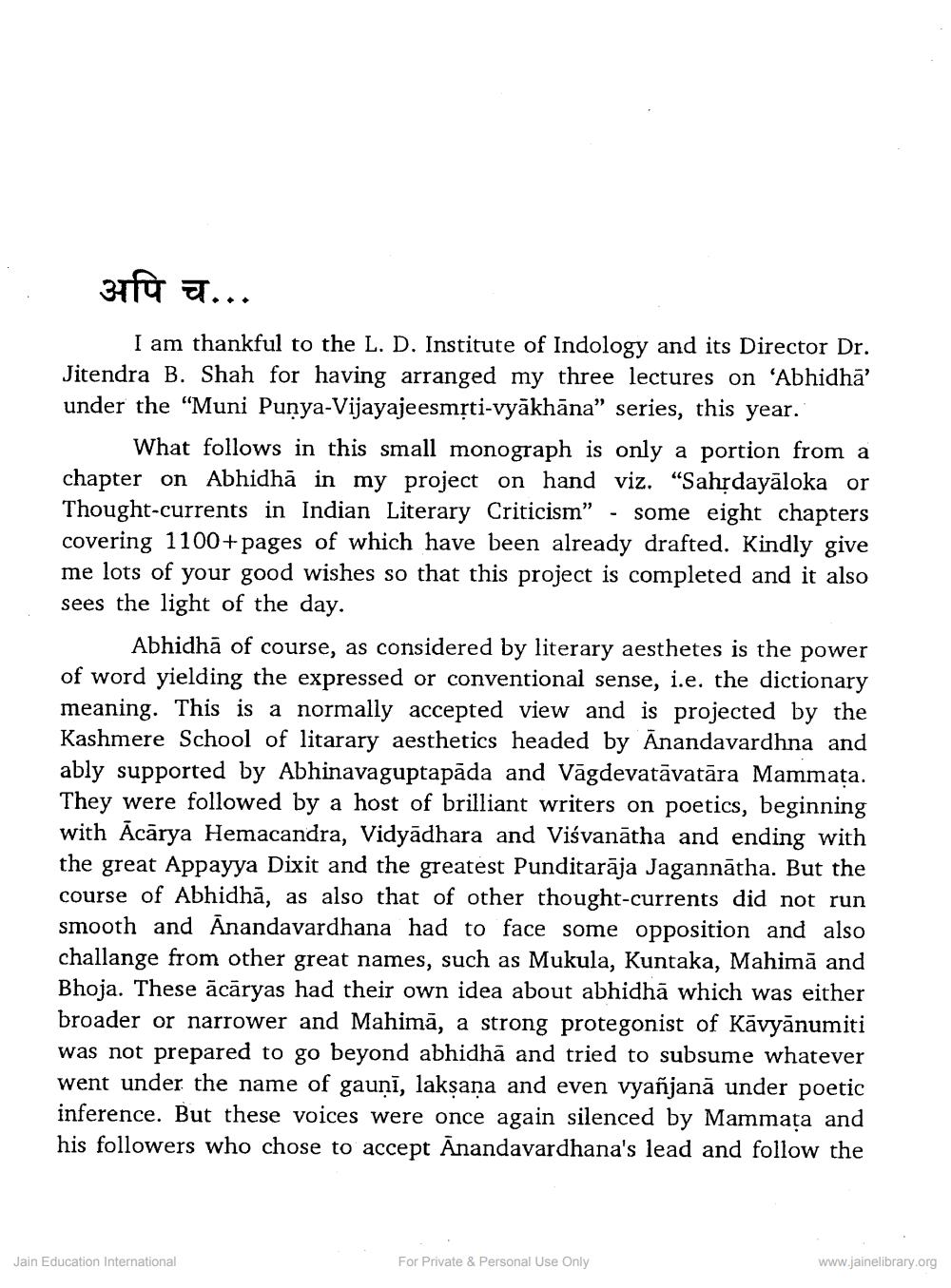Book Title: Abhidha Author(s): Tapasvi Nandi, Jitendra B Shah Publisher: L D Indology Ahmedabad View full book textPage 8
________________ 37f9 ... I am thankful to the L. D. Institute of Indology and its Director Dr. Jitendra B. Shah for having arranged my three lectures on 'Abhidhā' under the “Muni Punya-Vijayajeesmộti-vyākhāna" series, this year. What follows in this small monograph is only a portion from a chapter on Abhidhā in my project on hand viz. “Sahrdayaloka or Thought-currents in Indian Literary Criticism” - some eight chapters covering 1100+ pages of which have been already drafted. Kindly give me lots of your good wishes so that this project is completed and it also sees the light of the day. Abhidhā of course, as considered by literary aesthetes is the power of word yielding the expressed or conventional sense, i.e. the dictionary meaning. This is a normally accepted view and is projected by the Kashmere School of litarary aesthetics headed by Anandavardhna and ably supported by Abhinavaguptapāda and Vāgdevatāvatāra Mammața. They were followed by a host of brilliant writers on poetics, beginning with Ācārya Hemacandra, Vidyādhara and Viśvanātha and ending with the great Appayya Dixit and the greatest Punditarāja Jagannātha. But the course of Abhidhā, as also that of other thought-currents did not run smooth and Anandavardhana had to face some opposition and also challange from other great names, such as Mukula, Kuntaka, Mahimā and Bhoja. These ācāryas had their own idea about abhidhā which was either broader or narrower and Mahimā, a strong protegonist of Kāvyānumiti was not prepared to go beyond abhidhā and tried to subsume whatever went under the name of gaunī, laksana and even vyañjanā under poetic inference. But these voices were once again silenced by Mammata and his followers who chose to accept Anandavardhana's lead and follow the Jain Education International For Private & Personal Use Only www.jainelibrary.orgPage Navigation
1 ... 6 7 8 9 10 11 12 13 14 15 16 17 18 19 20 21 22 23 24 25 26 27 28 29 30 31 32 33 34 35 36 37 38 39 40 41 42 43 44 45 46 47 48 49 50 51 52 53 54 55 56 57 58 59 60 61 62 63 64 65 66 67 68 69 70 71 72 73 74 75 76 77 78 79 80 81 82 ... 86
